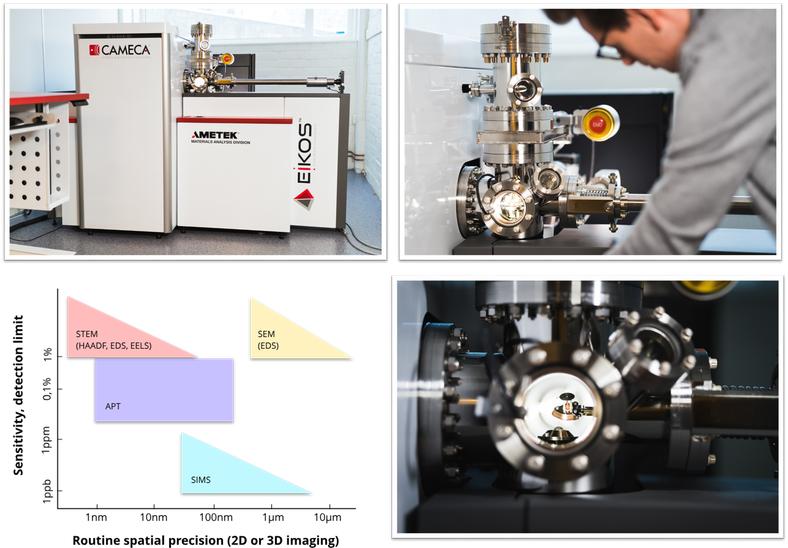APT on Precipitation
Atom probe tomography is a technique capable of 1) 3D atom-by-atom mapping with near atomic spatial resolution; 2) Equal detection efficiency to all elements and isotropes; and 3) A powerful combination of spatial and chemical sensitivity (down to ppm level).

Figure 1. EIKOS-UV APT instrument equipped with both laser and voltage evaporation modes, located at Hultgren laboratory, MSE, KTH.
In this work (tao-zhou-et-al-2021.pdf), A Cu precipitation-mediated austenitic transformation during ageing treatment of a precipitation hardening stainless steel is revealed through atom probe tomography, in situ synchrotron X-ray diffraction and computational thermodynamics and kinetics. The austenitic transformation is proposed to occur through the pathway: Cu precipitation at the martensite/retained austenite interfaces or at martensite lath boundaries → partitioning of austenite stabilizing elements towards interfaces of the Cu precipitates → reverted austenite formation.

Figure 2. APT 3D reconstruction of precipitates and elemental distribution in a 20 h aged specimen at 500 °C: (a) the overall view of the measured volume with elemental distribution and isoconcentration analysis of Cu, Ni, and Mn; (b) the distribution of Cu atoms for a selected part of the measured volume; (c) 10 at% Cu isoconcentration analysis, showing the absence of Cu precipitates in the Cu-rich bulky phase; and (d) 10 at% Cu + 7 at% Ni isoconcentration analysis, showing the lamellar structure.
In this work (ze-sheng-et-al-2021.pdf), the chemical compostion, mean radius, volume fraction, and number density of Cu precipitates a a function of ageing time for a maraging stainless steel was quantified by APT.

Figure 3. APT 3D reconstructions of aged specimens of Alloy A with 10 at.%Cu isoconcentration, red spheres indicating Mn atoms and green spheres indicating Ni atoms